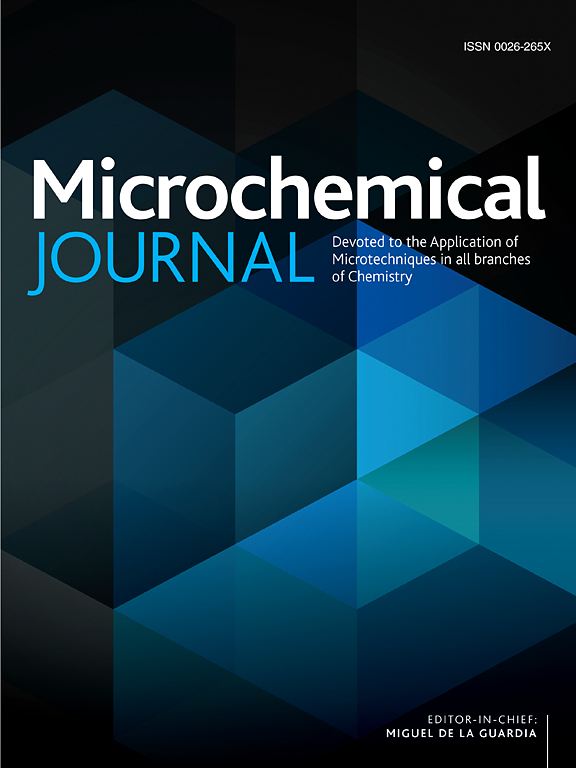Preconcentration of heavy metal ions using Konjac gum-Co3O4 magnetic hydrogel prior to their determination by ICP-OES
IF 4.9
2区 化学
Q1 CHEMISTRY, ANALYTICAL
引用次数: 0
Abstract
In this study, a hydrogel embedded with magnetic cobalt nanoparticles was synthesized from natural Konjac gum through a simple and low-cost method and its potential for separation and preconcentration of lead, copper, zinc, chromium, cobalt, and cadmium ions was investigated. Determination of the extracted metal ions was carried out using inductively coupled plasma /optical emission spectroscopy. The magnetic property of the hydrogel helps the separation from the solution and improves the adsorption capacity. The proper synthesis of the magnetic hydrogel was confirmed with different characterizations techniques, such as Fourier transform infrared spectroscopy, thermogravimetric analysis, scanning electron microscopy and transmission electron microscopy. The effective parameters on the sorbent synthesis and extraction process were studied. Under optimized conditions, the linear range and detection limit were found to be 0.3–100.0 µg L−1 and 34.0 ng L−1 for lead, 0.1–100.0 µg L−1 and 17.0 ng L−1 for chromium, 0.07–100.0 µg L−1 and 10.0 ng L−1 for zinc, 0.07–100.0 µg L−1 and 12.0 ng L−1 for copper, 0.1–100.0 µg L−1 and 15.0 ng L−1 for cadmium and 0.1–100.0 µg L−1 and 21.0 ng L−1 for cobalt, respectively. The developed method was successfully employed for the analysis of the above ions in the real samples including water, fruit and soil.

求助全文
约1分钟内获得全文
求助全文
来源期刊

Microchemical Journal
化学-分析化学
CiteScore
8.70
自引率
8.30%
发文量
1131
审稿时长
1.9 months
期刊介绍:
The Microchemical Journal is a peer reviewed journal devoted to all aspects and phases of analytical chemistry and chemical analysis. The Microchemical Journal publishes articles which are at the forefront of modern analytical chemistry and cover innovations in the techniques to the finest possible limits. This includes fundamental aspects, instrumentation, new developments, innovative and novel methods and applications including environmental and clinical field.
Traditional classical analytical methods such as spectrophotometry and titrimetry as well as established instrumentation methods such as flame and graphite furnace atomic absorption spectrometry, gas chromatography, and modified glassy or carbon electrode electrochemical methods will be considered, provided they show significant improvements and novelty compared to the established methods.
 求助内容:
求助内容: 应助结果提醒方式:
应助结果提醒方式:


